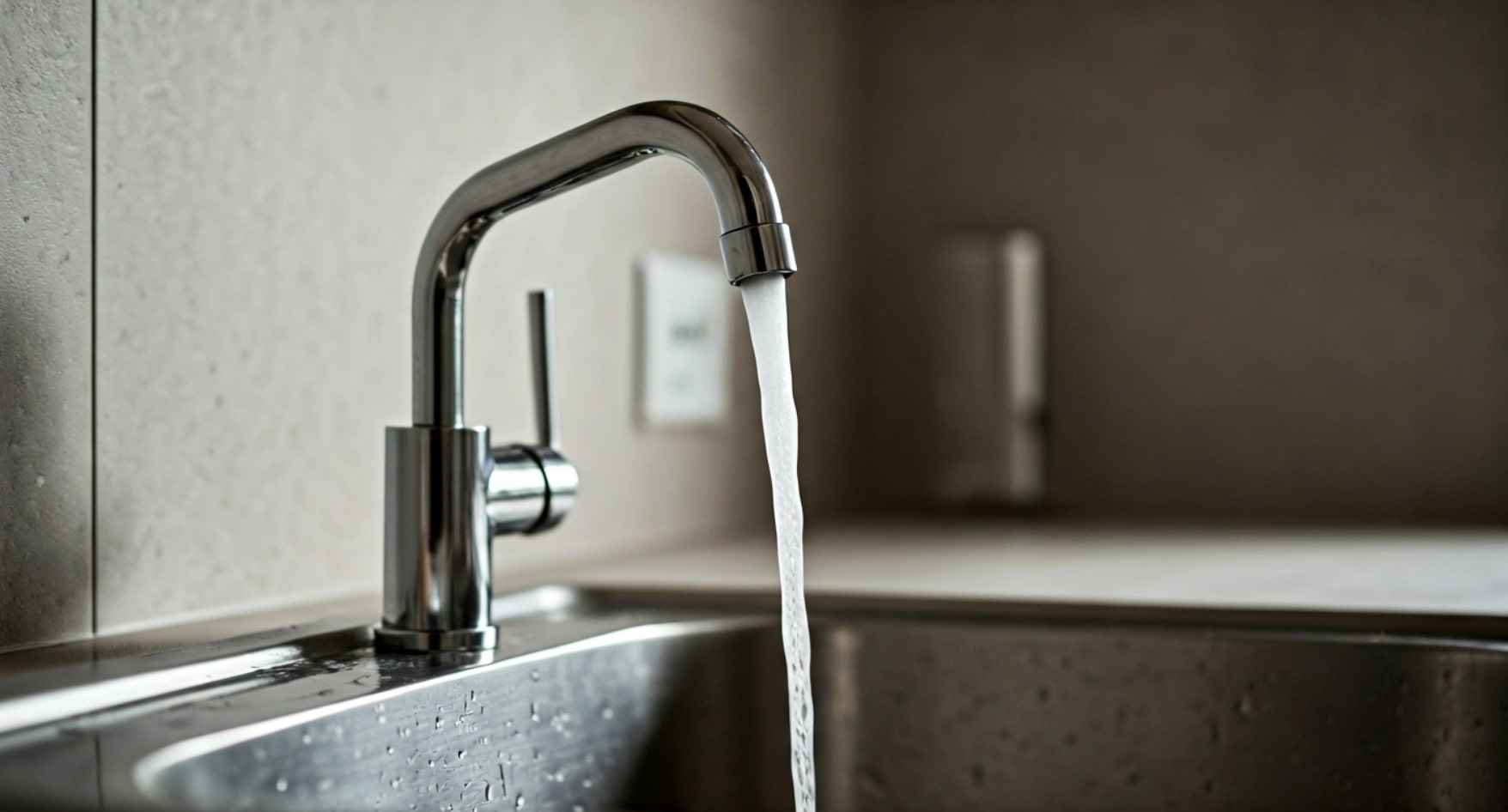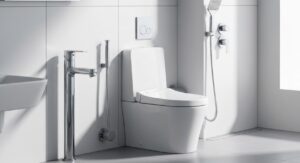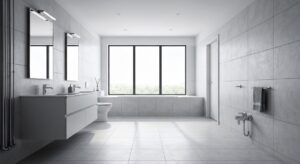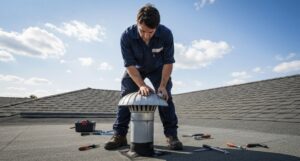Low water pressure can turn simple daily routines into frustrating chores. Whether you’re dealing with a weak shower stream or slow-filling appliances, understanding the root cause is essential for restoring reliable water flow. Problems in your water supply, such as issues with the water line or blockages in plumbing, often lead to water pressure low in your home. Unraveling these causes equips you to fix the issue quickly and ensure your household gets the steady water pressure it needs.
Common Causes of Low Water Pressure in Your Home
Ever wondered why your faucets trickle or your shower barely sprays? Low water pressure often traces back to a handful of culprits hidden in your plumbing. Spotting these clues is your first step to bringing strong water pressure back.
1. Clogged Pipes or Plumbing Fixtures
A frequent cause of low water pressure is blockage in your pipes or plumbing fixtures. Mineral deposits from hard water, sediment buildup, and everyday debris can gather over time, narrowing the pathways for water flow. When this happens, even a simple hand wash feels like a chore.
You might notice:
- Water pressure low at certain taps but not others
- A steady decline in water flow over weeks or months
- Noisy pipes when water runs
To fix low water pressure caused by clogged pipes, start by cleaning faucet aerators and showerheads. If that doesn’t help, a plumber may need to flush your water line or, in severe cases, replace sections of pipe. Wondering, “How do you fix low water pressure caused by clogged pipes or fixtures?” Cleaning or replacing affected areas will restore proper flow and bring back the pressure you expect.
2. Partially Closed Main Shutoff or Water Meter Valve
After repairs or maintenance, valves on your water line may not be fully reopened. A partially closed main shutoff valve or water meter valve can drastically restrict water supply, making your water pressure low throughout the house.
If you’ve recently had any plumbing work done, or notice water pressure suddenly drops, check your main valves. The main shutoff is usually found where the water line enters your home. Turn the valve counterclockwise to ensure it’s fully open.
Restoring the flow can be as simple as adjusting these valves. If your water pressure rebounds after opening the valve, you’ve identified the cause of low water pressure. Always double-check valves before calling for major repairs or replacements.
3. Hidden Leaks in the Plumbing System
Leaks can quietly sabotage your water pressure. Even a small, hidden leak along your water line allows water to escape before reaching your taps, resulting in water pressure low throughout your home.
Detecting leaks involves a few simple steps:
- Shut off all faucets and water-using appliances, then check your water meter after an hour. If it’s changed, you likely have a leak.
- Listen for dripping or hissing sounds in walls or under floors
Leaks don’t just waste water—they force your plumbing system to work harder, reducing flow to every outlet. If you suspect a leak, enlist a licensed plumber to find and repair it quickly. “What role do water leaks play in causing low water pressure, and how can I detect hidden leaks?” Leaks divert water from your fixtures, and checking your meter is a reliable way to catch them early.
4. Failing or Faulty Pressure Regulator
A pressure regulator controls how much force water enters your plumbing with from the main service line. If this device fails or is set too low, you’ll notice the water pressure low at every faucet, shower, or appliance.
Most regulators are preset to around 50 psi for household use. If yours is set too low, adjust it upward. However, regulators can also break or become clogged, making adjustments ineffective.
If you’ve checked your pressure settings and can’t restore proper flow, it’s likely time to replace the faulty regulator. Professional plumbers can swiftly swap out the device, restoring balanced water pressure across your water supply and protecting your plumbing system from damage.
5. Corroded or Aging Pipes
Over time, pipes can corrode from the inside out—especially if your water supply is acidic or your pipes are made from older metals. Corroded pipes become rough and narrow, restricting water flow and leading to the cause of low water pressure throughout your home.
Warning signs include:
- Brown or rusty water color
- Metallic taste to your tap water
Corrosion happens gradually, so homes with older plumbing are at greater risk. If you suspect your pipes are corroded, the best solution is replacement. New pipes will bring a noticeable improvement in water pressure, keeping your water line clear and efficient. Don’t ignore these signs—addressing corroded pipes protects both your plumbing and your family’s health.
6. Issues With Municipal Water Supply
Sometimes, the problem isn’t in your home at all. Municipal water supply issues can lead to water pressure low for entire neighborhoods. Causes can include main breaks, system repairs, or even supply-demand mismatches during peak times.
You might notice:
- A sudden drop in water pressure with no warning
- Neighbors experiencing similar problems
If you suspect the cause lies outside your property, call your local water provider. Reporting the issue can help them identify and fix the problem faster. Once municipal crews correct the source, your water line and pressure should return to normal.
7. High Water Demand From Multiple Appliances
Running several water-using appliances at the same time can cause water pressure to drop. When your dishwasher, washing machine, and shower are all in use, the water supply is divided, making water flow weaker at each fixture.
Commonly affected appliances and fixtures include:
- Showers and bathtubs
- Washing machines and dishwashers
- Outdoor sprinkler systems
Which appliances or plumbing fixtures are most likely to be affected by low water pressure and why? Anything that draws a lot of water or runs simultaneously with others will feel the drop the most. To avoid this, try staggering use or upgrading to high-efficiency appliances designed for better flow even under lower pressure.
8. Gravity and Distance From Water Source
Gravity plays a subtle but powerful role in your home’s water pressure. If your home is on a hill, has multiple stories, or sits far from the municipal supply, water has to work harder to reach your taps, causing the water pressure low at the highest points.
The farther your water line travels, the more pressure is lost along the way. Homes with higher elevation or distant locations from the main water line are especially vulnerable to this cause of low water pressure.
Installing a booster pump can offset gravity’s effect, improving water flow and ensuring even distribution throughout your home. For challenging water supply situations, this upgrade can make all the difference.
9. Old or Inefficient Plumbing Fixtures
Outdated or inefficient fixtures can bottleneck your water flow, making water pressure low in specific rooms or throughout your home. Old faucets and showerheads may become clogged with mineral deposits, while older toilets and appliances often require more water to function properly.
If you notice that only certain areas struggle with low flow, check the fixtures first. Replacing them with modern, high-efficiency options can restore strong, consistent water pressure and save water at the same time.
Upgrading your fixtures is one of the simplest and most cost-effective ways to solve the cause of low water pressure, ensuring every tap and appliance gets the flow it needs.
Identifying and Troubleshooting Low Water Pressure
Knowing whether your low water pressure is isolated to a single tap or affecting your entire home makes a big difference. Check multiple fixtures: if only one has water pressure low while others are fine, the cause is often a clogged aerator or fixture. If all taps suffer, your main water line or supply is likely involved.
Here’s a quick reference:
| Symptom | Possible Cause |
|---|---|
| One tap low pressure | Clogged aerator, fixture issue |
| Multiple taps low pressure | Water line, valve, or supply |
| Sudden pressure drop everywhere | Leak, municipal supply issue |
| Pressure varies at different times | High demand, faulty regulator |
“How do you differentiate between localized low water pressure (one tap) and whole-house problems?” Testing different fixtures and noting where the drop occurs leads you straight to the culprit.
Step-by-Step Guide to Detecting and Fixing Clogs
If clogged pipes or fixtures are behind your low water pressure, a systematic approach will help you restore normal flow. Start with the basics:
- Remove and clean faucet aerators and showerheads. Soak them in vinegar to dissolve mineral deposits.
- If pressure remains low, check for clogs in visible sections of pipe. Look for obvious buildup or discoloration.
- For persistent problems, have a licensed plumber inspect and clear deeper obstructions in your water line.
“How do you fix low water pressure caused by clogged pipes or fixtures?” Cleaning or replacing affected components often restores flow. Severe blockages may require pipe replacement to fully resolve water pressure low in your home.
Recognizing When a Leak Is the Culprit
Leaks are sneaky but have a big impact on water pressure. If you notice a sudden or gradual decline, especially with no visible cause, suspect a leak along your water line or in hidden areas.
To check, turn off all water sources and monitor your meter for unexpected movement. If the number changes, water is escaping somewhere. Listen for drips or running water behind walls or under floors.
“What role do water leaks play in causing low water pressure, and how can I detect hidden leaks?” Leaks waste water and reduce the pressure reaching your fixtures. Early detection using your meter and keen observation helps prevent further damage and restores your water supply to full strength.
Contact Target Plumbers for Dependable Plumbing Services
When low water pressure brings frustration to your daily routine, you need professionals you can trust. At Target Plumbers, our expert team specializes in diagnosing and repairing every cause of low water pressure. We handle everything from clogged water lines and hidden leaks to full system upgrades—including top-quality booster pump installations.
You deserve a reliable water supply and smooth water flow. That’s why we use industry-leading tools and up-to-date plumbing techniques to restore your water pressure fast. Our friendly specialists are ready to answer your questions and recommend the best solutions for your unique home. Don’t settle for weak streams or slow-filling appliances—contact Target Plumbers today and experience the difference of dependable service. Rest assured, your water pressure woes will become a thing of the past.
Conclusion
Low water pressure can often be an annoying issue, but understanding its causes can empower you to take the right steps toward a solution. From clogged pipes to issues with your municipal water supply, identifying the underlying problem is essential in addressing this frustrating situation. Remember, whether it’s a simple fix or requires professional assistance, you don’t have to navigate this alone. This is another issue mentioned in our guide to the most common plumbing problems—low pressure can have several sneaky causes.
Frequently Asked Questions
Which appliances are most affected by low water pressure?
Showers, washing machines, dishwashers, and outdoor sprinkler systems are most affected by low water pressure. These appliances rely on a steady water flow from your water supply. When water pressure is low, performance drops, causing inefficient cleaning, longer cycle times, and weaker sprays.
How do I detect hidden water leaks in my home?
To detect hidden leaks, turn off all water-using fixtures and appliances, then check your water meter after about an hour. If the reading changes, you likely have a leak somewhere in your water line. Listen for dripping or running water behind walls or under floors.
Can low water pressure be fixed without replacing pipes?
Yes, low water pressure can often be fixed without replacing pipes. Cleaning clogged fixtures, adjusting valves, fixing leaks, or installing a pressure booster pump can restore water flow. Replacing pipes becomes necessary only if corrosion or severe damage is the cause of low water pressure.






